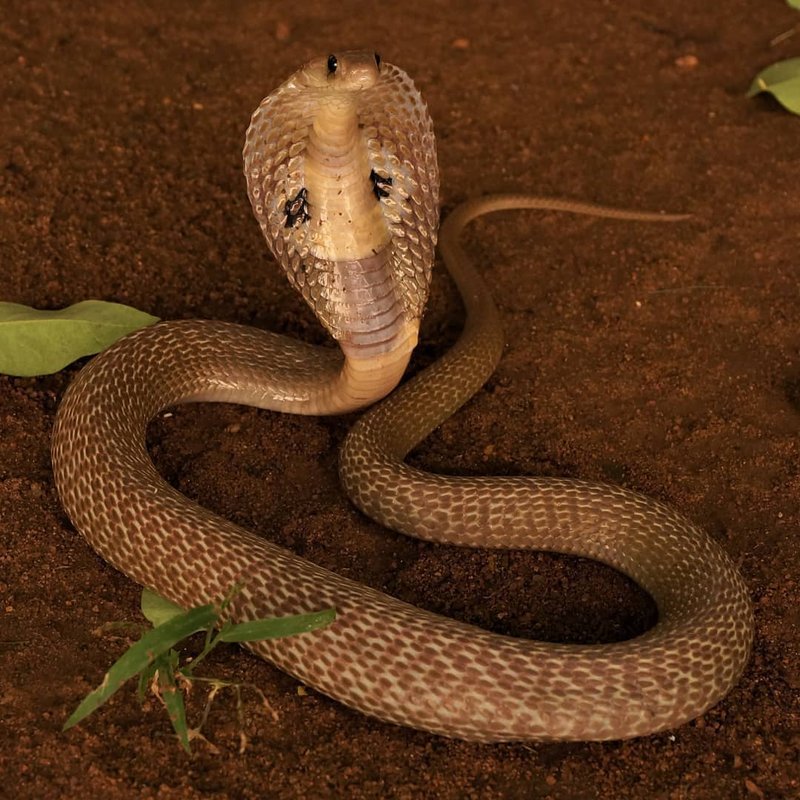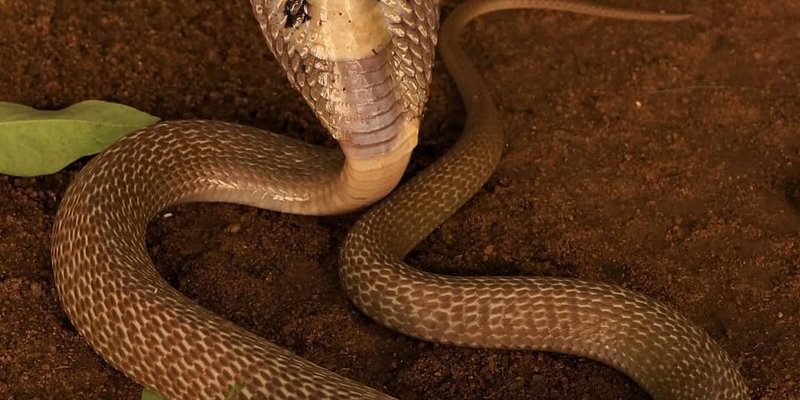
Picture this: the world of the Indian cobra is a blend of survival skills and instinctive behavior. Imagine a new mother knowing exactly what to do, without a parenting manual in sight. In this article, we’ll dive deep into how Indian cobras raise their young in the wild, exploring their reproductive habits, nesting behaviors, and the challenges they face in a competitive environment.
The Reproductive Cycle of Indian Cobras
Before we get into the nitty-gritty of raising young, let’s talk about how Indian cobras mate. The mating season typically runs from late winter to early spring. During this time, male cobras engage in a bit of a courtship dance, showing off their impressive hoods and performing what looks like a graceful ballet. They’ll engage in combat with other males to win over a female. Honestly, it’s a bit like a reality show where only the most confident contestant gets the girl.
Once a male successfully courts a female, they mate, and the female will then lay her eggs. This brings us to the part where you might be wondering how many eggs a female cobra lays. Generally, she will produce between 20 to 40 eggs! That’s quite a handful, isn’t it? But here’s the kicker: unlike many other reptiles, Indian cobras don’t just abandon their eggs.
Nesting Behavior
After laying her eggs, the female Indian cobra is quite the dedicated mother. She instinctively finds a safe and warm place to lay them, often opting for locations like abandoned rodent burrows or crevices in logs. Nesting is crucial because the right environment can significantly impact the survival rates of the young snakes.
Once the eggs are laid, the female curls around them, providing warmth and protection. This is where the magic happens! Incubation lasts approximately 60 to 70 days, and during this time, the mother is highly vigilant. She makes sure that potential threats, like predators, steer clear. It’s a bit like a mother bear protecting her cubs, really!
As the eggs develop, the female will even adjust her position to ensure they remain at the right temperature. This commitment is astounding, given that many snakes don’t show any parental care after laying their eggs.
The Hatching Process
When the time finally comes for the eggs to hatch, the female cobra is still right there, ready to assist. As the hatchlings break free from their eggs, they are fully formed and ready to face the world. Isn’t that incredible? They aren’t like those tiny, helpless creatures you might expect.
Once the hatchlings emerge, the mother doesn’t stick around for long. After all, the harsh reality of the wild means she must allow them to become independent. You might think this is a bit harsh, but it’s a survival tactic. Leaving the young to fend for themselves quickly teaches them important skills for surviving in the wild.
In many cases, the hatchlings will have to leave the nest almost immediately. As they slither away to find their own territory, they already possess the instinctive knowledge to hunt and evade predators.
Challenges in the Wild
Even though the Indian cobra’s motherly behavior is impressive, her young face numerous challenges in the wild. Predation is one of the main threats. Young cobras are vulnerable to birds of prey, larger snakes, and even small mammals.
To survive, these hatchlings use their natural camouflage to blend into their surroundings. Just imagine being a tiny snake trying to hide among the leaves—it’s a tough life! They must be quick and alert, learning to hunt for food, which primarily consists of small rodents and amphibians.
Another challenge that young cobras face is competition for resources. As they grow, they must establish their territory and find food without crossing paths with older, more experienced snakes. It’s like trying to find a decent spot in a crowded café—sometimes, it means being a little sneakier than usual!
Hunting and Feeding
Once the hatchlings are independent, their journey continues with learning how to hunt. Here’s the thing: even though they have the instincts to hunt, it takes practice to catch their prey effectively. Indian cobras are constrictors, meaning they will wrap around their prey and squeeze until it can no longer breathe.
As young snakes, they start off with smaller prey. Think of it as starting with appetizers before tackling a full-course meal. As they mature, they’ll gradually move on to larger meals. This process is crucial, as it builds their confidence and hunting skills.
During this stage, they also learn about their environment. They quickly adapt to various habitats, such as forests, grasslands, and even rural areas. This adaptability is one reason why Indian cobras thrive in so many regions across India and surrounding countries.
Growth and Maturity
As the young cobras grow, they go through several molting phases. Each time they shed their skin, they not only grow bigger but also become stronger. It’s almost like putting on a new suit of armor. This process helps them to not only adapt to their size but also improve their hunting capabilities and increase resilience against predators.
By the time they reach around 3 to 4 years of age, Indian cobras are considered adults and are ready to mate. It’s a full circle moment; they’ll then carry on the cycle of life, beginning the process all over again.
The Importance of Maternal Care
You might wonder why a mother snake would invest so much time and energy into her eggs, especially since many reptiles don’t typically do so. Well, nurturing the eggs and hatchlings increases the chances of survival, ensuring that at least some of her offspring reach adulthood. This behavior speaks volumes about the adaptability and intelligence of the Indian cobra.
Strong maternal instincts, paired with a nurturing environment, can lead to healthier and more resilient young snakes. This is critical for the species, especially as habitats continue to change and predators become more common.
In summary, the way Indian cobras raise their young is a unique blend of instinctual behavior, environmental adaptation, and survival strategy. So, the next time you think about cobras, remember that behind those fierce exteriors lies a mother wolf—or in this case, a mother cobra—taking care of her young in a world fraught with challenges.
Final Thoughts
Understanding how Indian cobras raise their young adds depth to our appreciation of these fascinating creatures. From the careful selection of nesting sites to the protective instinct displayed during incubation, every step is crucial for ensuring the survival of the next generation.
So, next time you come across a snake (hopefully from a safe distance!), you’ll know there’s a whole story behind those seemingly solitary creatures. They’re not just here to scare us; they’re part of a vibrant ecosystem and a complex journey of life.

